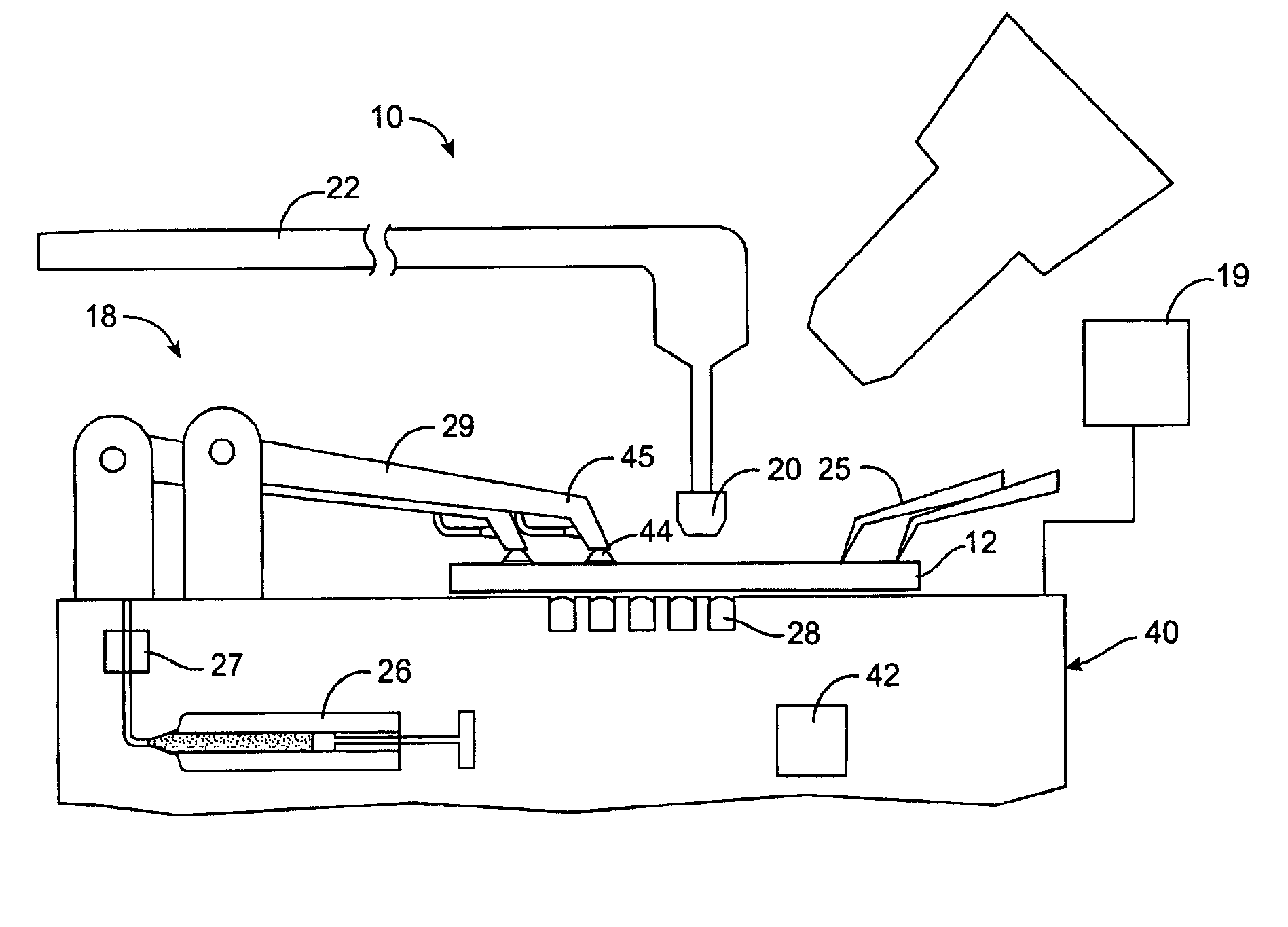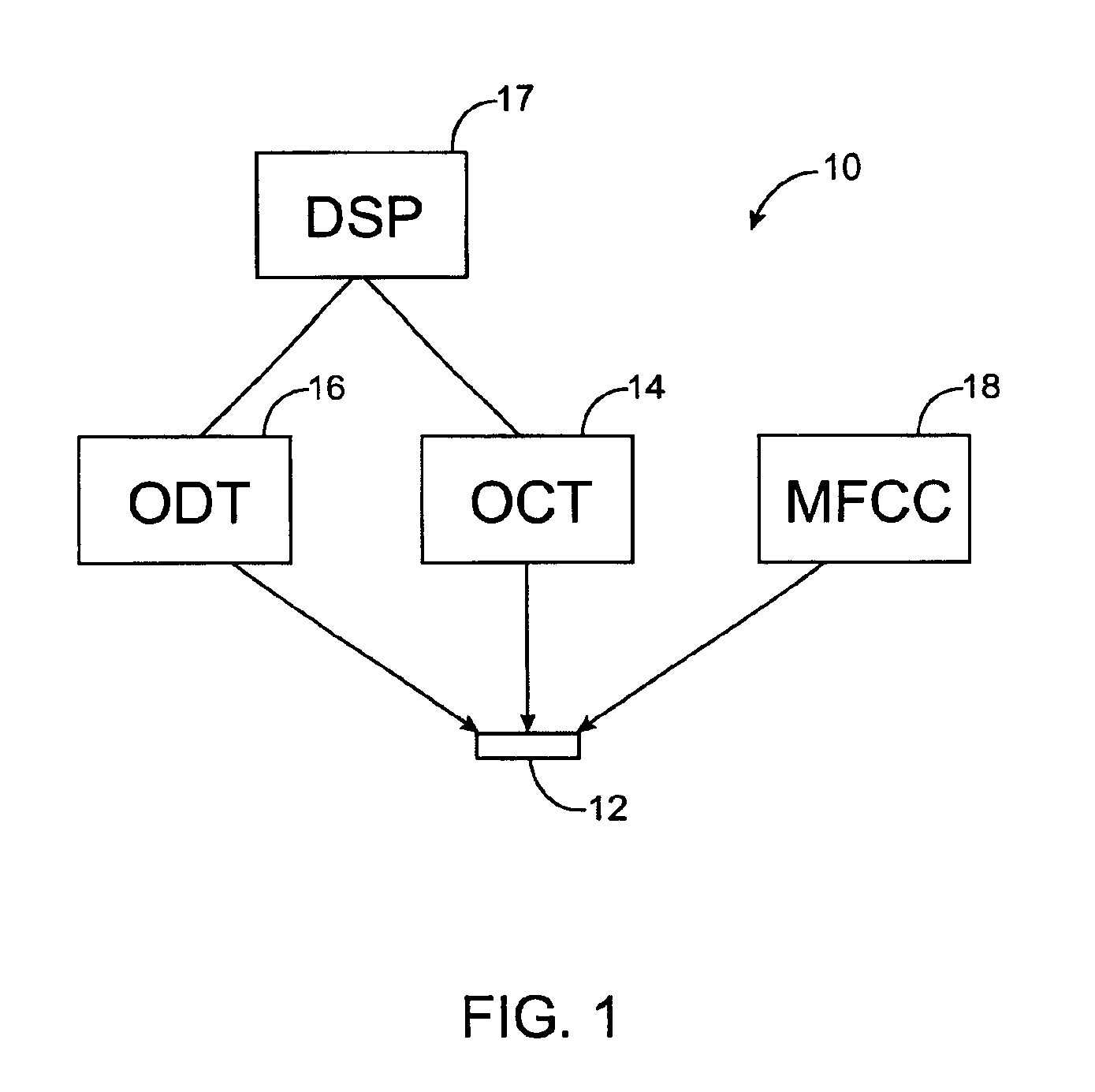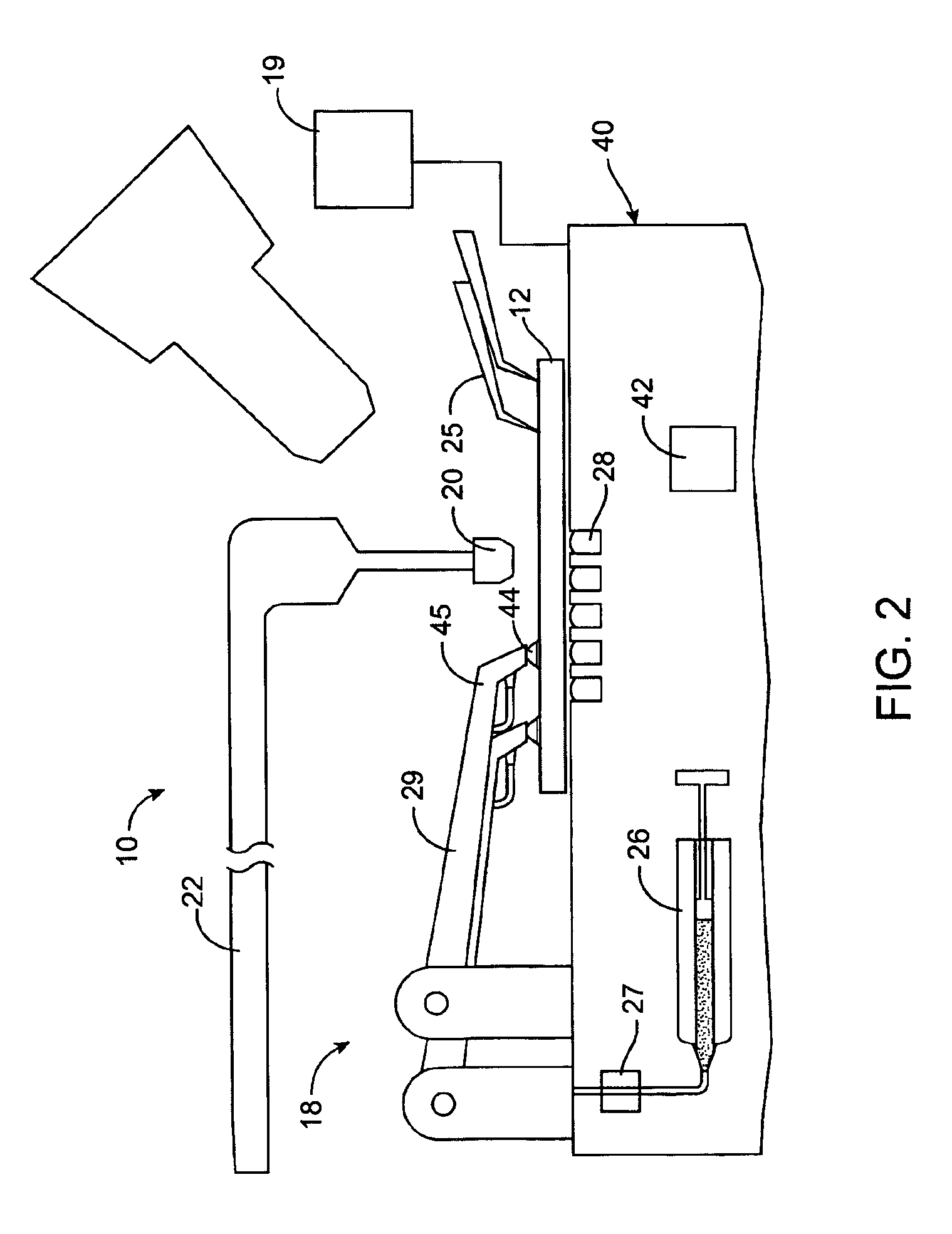System for real time, non-invasive metrology of microfluidic chips
a microfluidic chip and metrology technology, applied in the field of real-time, non-invasive metrology of microfluidic chips, can solve the problems of inability to achieve, and inability to achieve fluorescence-based imaging in a plane. achieve the effect of high throughpu
- Summary
- Abstract
- Description
- Claims
- Application Information
AI Technical Summary
Benefits of technology
Problems solved by technology
Method used
Image
Examples
Embodiment Construction
1. The System
As shown in FIG. 1 smart microfluidic probe station 10 comprises an Optical Coherence Tomography (OCT) subsystem 14, Optical Doppler Tomography (ODT) subsystem 16, and a microfluidic chip controller (MFCC) 18. MFCC 18 allows fluids to be loaded into the BioFlips 12 at preprogrammed pressures, and provides actuation for certain on-chip components such as valves and pumps. The OCT / ODT subsystems 14, 16 are capable of providing simultaneous multiple point measurements of flow of various fluids in multiple layers of a three-dimensional biological microfluidic chip 12, including biological fluids such as blood, serum, interstitial fluids or saliva.
ODT / OCT based probe station 10 is suitable for microfluidic biochip manufacturing and testing purposes and will enable the development of practical manufacturing technology for biochips 12. Probe station 10 will not only identify design flaws of Bio-Flips 12 in the development phase, but also critically evaluate the manufacturabili...
PUM
| Property | Measurement | Unit |
|---|---|---|
| diameter | aaaaa | aaaaa |
| pixel size | aaaaa | aaaaa |
| acoustic wavelengths | aaaaa | aaaaa |
Abstract
Description
Claims
Application Information
 Login to View More
Login to View More - R&D
- Intellectual Property
- Life Sciences
- Materials
- Tech Scout
- Unparalleled Data Quality
- Higher Quality Content
- 60% Fewer Hallucinations
Browse by: Latest US Patents, China's latest patents, Technical Efficacy Thesaurus, Application Domain, Technology Topic, Popular Technical Reports.
© 2025 PatSnap. All rights reserved.Legal|Privacy policy|Modern Slavery Act Transparency Statement|Sitemap|About US| Contact US: help@patsnap.com



